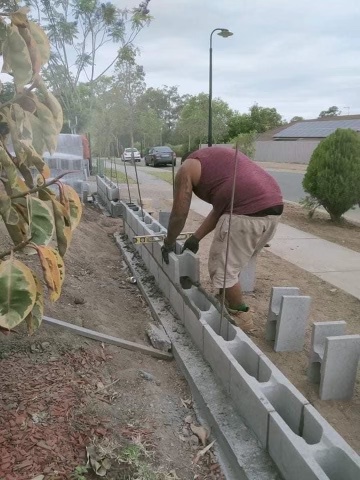Timber Fencing Frequently Asked Questions
Choosing the right fence for your home or business is a crucial long-term investment. It involves considering factors such as material cost, installation, durability, maintenance requirements, and upkeep expenses. To ensure you make an informed decision, it’s important to understand your responsibilities regarding installation and upkeep. In this guide, we address common questions from property owners looking to enhance property value, privacy, and noise reduction through the addition or replacement of a fence.

In Queensland, neighbors generally share the cost of a dividing fence equally?
A dividing fence on the collective boundary line is jointly owned by neighboring properties. Both neighbors must equally contribute to its construction and maintenance. They cannot modify or attach structures to the fence without mutual agreement.
If a fence is built on one neighbor’s land, it belongs to that neighbor, even if both parties helped with the construction. If one neighbor wants a fancier fence than necessary, they are responsible for the extra costs and upkeep.
Neighbours are usually not jointly responsible for retaining walls because they serve different purposes and primarily benefit one neighbour by supporting excavated or built-up soil.
What is the maximum allowable height for a fence built above a retaining wall?
According to the provided statement, building approval is not necessary for a fence if its height does not exceed two meters from the ground surface. However, if a fence or a combined retaining wall and fence structure is taller than two meters, it will require approval.
What is the best timber for a fence?
Treated pine is a highly recommended timber for fencing due to its cost-effectiveness and protective features. It undergoes a pressure treatment process that safeguards it against fungal decay, aging-related rot, as well as damage from insects and termites.
How long can I reasonably expect my timber fence to last?
A good quality timber fence typically has a general life expectancy of 15 years with minimal upkeep. By putting a little more effort into maintenance, its lifespan can be extended to over 20 years. However, if the timber is left untreated, it won’t last longer than seven years. Although untreated timber may be cheaper and can be treated at home, the application of treatments by professionals, such as pressure-treated types, provides deeper penetration and better protection for the wood.
What are some tips for maintaining a timber fence?
To maintain the longevity of your timber fence, it’s important to promptly replace any rotting boards or posts and secure or replace loose or missing nails or screws. Crooked fence posts may indicate issues such as erosion, rot, or poor footing. To protect the wood and extend its lifespan, it’s recommended to stain or paint it when signs of wear appear. However, it is crucial to follow the proper preparation steps before applying any treatment to ensure the effectiveness of the application.
Which is better for fencing: treated pine or hardwood?
Treated pine is a type of timber that has been specially treated to resist termites and rot. Unlike hardwood, which is more susceptible to termite damage and decay, treated pine is designed to withstand these issues, making it a more durable option, particularly when exposed to soil. Its resistance to termites and rot allows it to last longer and maintain its structural integrity.
Should pressure-treated wood be painted or stained for better results?
Staining pressure-treated wood is recommended because the preservatives present in treated wood can hinder the bonding of paint. Moisture in the timber can also affect paint adhesion. Painting pressure-treated wood requires thorough preparation, and neglecting this step can compromise the effectiveness of the protection provided.
Are you interested in receiving a free quote for your property?
